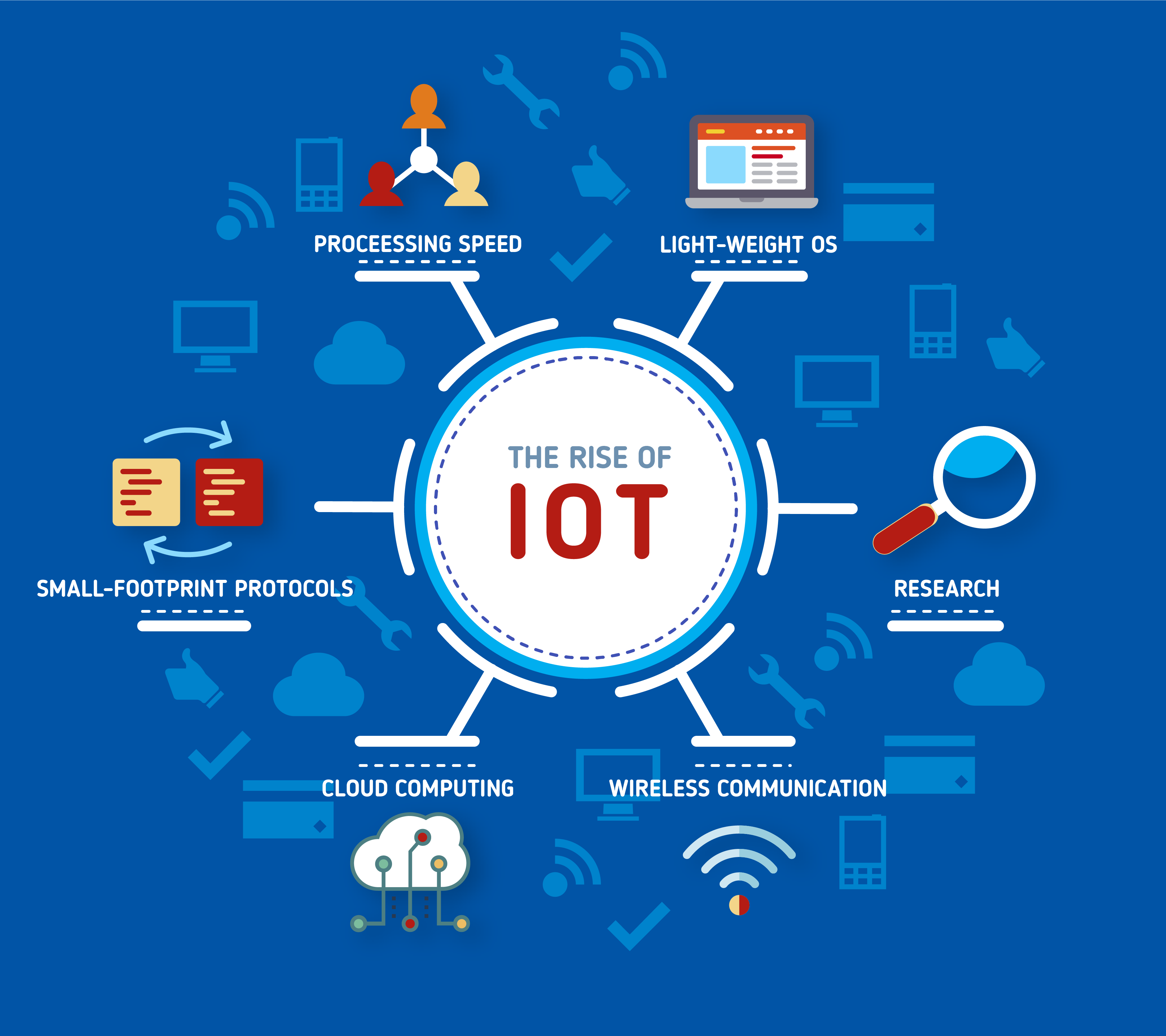The rapid expansion of the Internet of Things (IoT) has transformed how we interact with technology, making our homes, cities, and industries more connected than ever. However, this increased connectivity also introduces significant risks that demand immediate attention. As the number of IoT devices continues to grow, so too do the potential threats they pose to privacy, security, and even public safety.
The Growing Presence of IoT Devices

According to Statista, there are currently around 15 billion IoT devices in use globally, with projections suggesting this number could double to 30 billion by 2030. These devices range from simple sensors and smart home appliances to complex industrial systems and autonomous vehicles. While the benefits of IoT are undeniable—enhanced efficiency, automation, and improved decision-making—the risks associated with these interconnected systems are becoming increasingly apparent.
Key Risks Posed by IoT Devices
1. Interconnected Nature and Cyber Threats
One of the most significant risks of IoT devices is their interconnected nature. These devices often communicate with each other, creating a network that can be exploited by cybercriminals. This interconnectedness increases the attack surface, making it easier for hackers to launch large-scale attacks. For example, the Mirai botnet attack in 2016 exploited thousands of vulnerable IoT devices, including cameras and routers, to launch a massive DDoS attack that disrupted major websites across the United States.
2. Weak Security Measures

Many IoT devices lack robust security measures, such as strong authentication mechanisms, encryption, and regular software updates. This makes them easy targets for cyberattacks. According to the Unit 42 IoT Threat Report, 98% of all IoT device traffic remains unencrypted, leaving them vulnerable to data breaches and unauthorized access.
3. Privacy and Data Security Risks
IoT devices collect vast amounts of data, including personal and sensitive information. If this data is not properly secured, it can be intercepted or accessed by unauthorized entities, leading to privacy violations and identity theft. For instance, the Verkada hack in 2021 exposed live video footage from over 150,000 cameras used by businesses, schools, and government agencies, highlighting the serious consequences of inadequate security.
4. Complexity and Scale of IoT Networks
The complexity and scale of IoT networks make managing security a daunting task. With millions of devices communicating across various platforms, identifying vulnerabilities and mitigating risks becomes increasingly challenging. Additionally, many IoT devices have long life cycles, meaning they may continue to operate even after manufacturers no longer provide security updates, leaving them exposed to known vulnerabilities.
5. Legacy and Outdated Devices
Legacy devices that are no longer supported by manufacturers pose a significant risk. These devices often lack modern security features and may not receive critical updates, making them prime targets for cyberattacks. The absence of regular maintenance and updates further exacerbates this issue.
6. Human Factors
Human error and poor security practices also contribute to IoT vulnerabilities. Weak passwords, lack of awareness about security protocols, and improper configuration of devices can create entry points for attackers. For example, the Mirai attack was largely facilitated by default or weak passwords on IoT devices, underscoring the importance of user education and proper security practices.
Real-World Examples of IoT Security Breaches

The Mirai Botnet Attack
In 2016, the Mirai botnet attack demonstrated the devastating impact of insecure IoT devices. Hackers exploited thousands of IoT devices, such as cameras and routers, which were secured with default or weak passwords. These devices were turned into a botnet, launching a massive DDoS attack that disrupted internet traffic across the United States, affecting major websites like Twitter, Spotify, and Netflix.
The Verkada Hack
In March 2021, the Verkada hack exposed the vulnerabilities of cloud-based IoT systems. Hackers gained access to over 150,000 cameras used by businesses, schools, and government agencies, exposing sensitive information, including live video footage from women’s health clinics, prisons, and police departments. The breach highlighted the need for stronger security measures, particularly in cloud-based IoT environments.
Emerging Trends in IoT Security
Hardware-Based Security
Hardware-based security involves incorporating security features directly into the physical components of IoT devices. This approach includes encryption, secure booting, and tamper-resistant designs, making it more difficult for attackers to compromise devices. By embedding security at the hardware level, manufacturers can provide a more robust defense against cyber threats.
Artificial Intelligence and Machine Learning
AI and ML are increasingly being used to enhance IoT security. These technologies can detect anomalies in network traffic, identify potential threats, and adapt to new attack patterns in real-time. For example, AI-powered intrusion detection systems can analyze traffic patterns and flag suspicious activity, helping to prevent cyberattacks before they cause damage.
Identity and Access Management (IAM)
IAM solutions help manage user identities and control access to IoT devices. Strong authentication mechanisms, such as multi-factor authentication and biometrics, can significantly reduce the risk of unauthorized access. Additionally, IAM systems can track user activity and enforce security policies, ensuring that only authorized users can interact with IoT devices.
eSIM Technology

eSIMs, or embedded SIMs, are gaining popularity due to their enhanced security features. Unlike traditional SIM cards, eSIMs are soldered directly into devices, making them more resistant to tampering and fraud. They also support over-the-air updates, allowing manufacturers to remotely deploy security patches and updates, improving the overall security of IoT devices.
Blockchain-Based Security
Blockchain technology offers a decentralized and tamper-proof method of securing IoT data. By storing data on a blockchain, IoT devices can ensure data integrity, confidentiality, and availability. This approach is particularly useful in scenarios where data authenticity and traceability are critical, such as in supply chain management and healthcare applications.
Government Regulations and Standards
California IoT Security Law
California’s IoT Security Law, also known as Senate Bill 327, mandates that manufacturers of internet-connected devices implement “reasonable” security features to protect against unauthorized access. The law requires devices to have unique preprogrammed passwords or the ability to generate them for each device. While the law does not specify exact security standards, it represents a significant step toward addressing IoT security concerns.
IoT Cybersecurity Improvement Act
The U.S. government passed the IoT Cybersecurity Improvement Act in 2020, requiring IoT devices used by the federal government to meet minimum security standards. Although the act primarily applies to government use, it sets a precedent for broader adoption of security best practices in the private sector.
UK Product Security and Telecommunications Infrastructure Act (PSTI Act)
The PSTI Act, enacted in December 2022, establishes minimum security standards for consumer IoT devices in the UK. It includes a ban on universal default passwords and requires manufacturers to provide a public point of contact for reporting vulnerabilities. These regulations aim to improve the overall security of IoT devices and protect consumers from potential threats.
EU Cybersecurity Act
The EU Cybersecurity Act introduced a European Cybersecurity Certification Framework to establish harmonized standards for certifying the security of IoT devices and services. While the certification scheme is voluntary, it encourages companies to adopt higher security standards, enhancing trust and market recognition.
Best Practices for Securing IoT Devices
1. Use Strong Passwords
Avoid using default or weak passwords on IoT devices. Instead, set unique and complex passwords to reduce the risk of unauthorized access.
2. Enable Two-Factor Authentication (2FA)
Two-factor authentication adds an extra layer of security by requiring users to provide two forms of verification. This significantly reduces the risk of account compromises.
3. Keep Devices Updated
Regularly update firmware and software on IoT devices to address known vulnerabilities and improve security. Manufacturers often release patches to fix security issues, so staying up-to-date is crucial.
4. Segment Your Network
Network segmentation helps isolate IoT devices from other parts of your network, reducing the risk of lateral movement by attackers. This can prevent a breach in one device from spreading to others.
5. Monitor Device Activity
Use network monitoring tools to track device activity and detect unusual behavior. Anomalies in traffic patterns can indicate potential security threats, allowing you to take action before a breach occurs.
Conclusion
As the Internet of Things continues to expand, so do the risks associated with these interconnected devices. From cybersecurity threats to privacy violations, the challenges posed by IoT require a proactive and comprehensive approach to security. By implementing best practices, leveraging emerging technologies, and adhering to regulatory standards, individuals and organizations can better protect themselves from the growing threat landscape. Staying informed and vigilant is essential in ensuring the safe and secure integration of IoT devices into our daily lives.
Stay updated with the latest news and trends in IoT security. Explore today’s headlines and stay ahead of the curve.
Meta Title: US Trending News: IoT Device Risks
Meta Description: Discover the risks posed by Internet of Things (IoT) devices and learn how to protect yourself. Stay informed with the latest US trending news.
Author: Jane Doe
Title/Role: Cybersecurity Analyst
Credentials: Jane Doe is a certified cybersecurity analyst with over 10 years of experience in protecting digital assets and mitigating cyber threats. She specializes in IoT security and has contributed to several industry publications.
Profile Link: https://www.janedoe.com
Sources:
– Statista – IoT Device Growth
– Unit 42 IoT Threat Report
– California IoT Security Law
Internal Links:
– Understanding AI Security Frameworks
– Top AI Cybersecurity Trends
– Generative AI Policy Templates
Schema Markup:
{
"@context": "https://schema.org",
"@type": "Article",
"headline": "US Trending News: Understanding the Risks of Internet of Things (IoT) Devices",
"description": "Discover the risks posed by Internet of Things (IoT) devices and learn how to protect yourself. Stay informed with the latest US trending news.",
"author": {
"@type": "Person",
"name": "Jane Doe"
},
"publisher": {
"@type": "Organization",
"name": "TechNews Daily",
"logo": {
"@type": "ImageObject",
"url": "https://www.example.com/logo.png"
}
},
"datePublished": "2025-04-05"
}
Featured Snippet Optimization:
The Internet of Things (IoT) poses significant risks, including cybersecurity threats, privacy violations, and vulnerabilities in interconnected networks. To mitigate these risks, users should implement strong passwords, enable two-factor authentication, keep devices updated, and monitor network activity.
Call to Action:
Stay informed about the latest developments in IoT security. Explore today’s headlines and protect your digital assets.











More Stories
What Is Yodo Para Tiroides and How Does It Affect Thyroid Health?
How to Claim Your Joy in League of Legends: A Step-by-Step Guide
What is WSET? A Comprehensive Guide to Wine Education